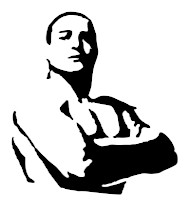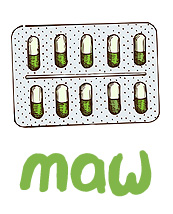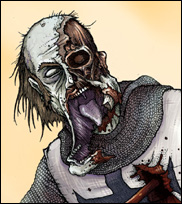Just as the Life of Arthur has enjoyed surges in popularity in England and America during times when Christianity has lost favor in the public mind, this Old German Legend, which carries many aspect of ancient mythology as expressed in epics such as Gilgamesh and the Iliad, seems to have enjoyed a rebirth of late in Germany and Scandinavia.
The rough outline of this very basic story is that Siegfried, son of a king, forges a sword to slay a dragon in order to win the hand of a princess of the Burgundians. In slaying the dragon a raven, or death bird, tells him that he will be invulnerable if he bathes in the dragons’s blood. Just as Achilles was similarly dunked by his mother, leaving his heel vulnerable, the tail of the dying dragon—or its breath—knocks loose a leaf that falls on his back behind his heart and prevents him from avoiding the assassin's cowardly stroke.
Major Themes
The dragon represents the natural world and its dangers.
Siegfried represents Man.
The Nebilung, Alberich, and his kind represent the earliest inhabitants of Europe [possibly represented by the Basque remnant] that were driven to extinction by the Indo-European invaders. The common legend of little people throughout European folklore represents a cultural memory of displacing indigenous inhabitants.
Siegfried’s blacksmith trade and his keen sword represent technology.
The 12 kingdoms he conquers with his sword and impervious skin represent the 12 months of the year.
Kriemhild, the Burgundian princess, represents Civilization—and perhaps, specifically, Christianity.
Brunhild, Siegfried’s natural mate, who he instead wins for his brother-in-law, represents Woman.
The story is simply: Man overcomes nature through technology, crushes rival kinds of men, masters the seasons of the year, attains civilization, turns his back on Woman in favor of the idealized imagery of civilized life, and is finally killed by the very forces he set in motion.
Below are links to two films, along with my impressions.
In Worms: An Allegorical Reading of Fritz Lang’s 1924 Mythic Silent Film Epic Die Nibelungen: Epilogue to of Lions and Men
The woodcut-style motif encompassing the first letter of each dialogue plate employees totemic animal symbols for the character speaking, or, in some cases, representing the character being spoken of.
Siegfried is the free spirit of natural Man, signified by the totemic singing bird. He has a natural lion-like mane of hair.
Krienhild is the idealized denatured woman, signified by the unicorn. Her hair is severely bound.
Volker, the bard, represents the people and his totem is the stag. He has full, nearly wild, hair, making him somewhat of a natural person like Siegfried.
Gunther, the King of Worms, and the other Burgundian princes, have their hair flattened by a crown—ironically intended to mimic the mane of the lion—and sit in stifling high-backed thrones. The totemic lion, representing the king, is often caged within the hollow of the letter.
Brunhild, the natural woman with wild hair, is represented by the serpent, an evil animal to Christians, but a creature of wisdom in many tribal faiths.
The page is represented by the doe, indicating that he represents servitude.
Hagan Traje of the hairy eye, is symbolized by the wolf, the animal that brings down the greatest beasts of the northern forest.
Mime, the master black smith, and Alberich the Nebilung, have the owl for a totem, as they represent the ancestral races that were truly native to this land. They enable man, but are not his friend.
‘The People of Mist and Twilight’
The Ring Of The Nibelungs Part 1 2004, with Khristanna Loken and Max Von Sydow
As an action movie this modern adaptation is every bit as lame as the silent film of 80 years earlier. The exception is the dragon and the dragon fight, with the beast being a more realistic lizard modeled on a Komodo dragon
The allegorical aspects are largely lost in this version, except for the Nibelung, who offer more of a mythological, and less of a material treasure-oriented perspective, then in the silent film. With the importance of the ring, the slaying of the dragon, the royal bloodline, and the specters of lost races, it is clear that Tolkien borrowed as heavily from this Nordic tradition as he did from the Gaelic. This film seems to have been made in a manner calculated to demonstrate the debt owed this Nordic epic by Tolkien’s Lord of the Rings.











